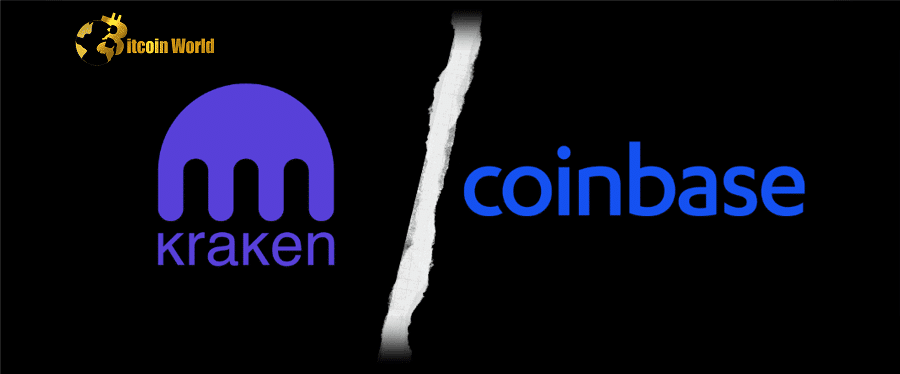The crypto world is buzzing after the SEC’s recent crackdown on Kraken’s staking services. With a $30 million settlement and a halt to Kraken’s US staking program, the regulatory spotlight is now intensely focused on crypto staking. So, where does this leave other major players like Coinbase? Coinbase’s Chief Legal Officer, Paul Grewal, has stepped forward to clarify – and differentiate – Coinbase’s staking offerings from those of Kraken. Let’s dive into what he had to say and what it means for you, the crypto enthusiast.
Coinbase vs. Kraken Staking: What’s the Real Difference?
During Coinbase’s fourth-quarter results Q&A on February 21st, a shareholder’s question about staking services prompted a detailed response from Paul Grewal. He didn’t mince words, stating that Coinbase’s staking products are “fundamentally different” from Kraken’s yield programs. But what exactly are these differences?
- User Asset Control: Grewal emphasized a crucial point: Coinbase users retain ownership of their cryptocurrency. This is a core distinction.
- Return Rights: He further added that Coinbase clients have a “right to the return,” implying that Coinbase cannot arbitrarily withhold returns.
- Transparency as a Public Company: Coinbase’s status as a publicly traded corporation brings a level of “deep transparency access into our financials” that private entities like Kraken may not offer.
These points are significant, especially when viewed against the backdrop of the SEC’s complaint against Kraken. The SEC argued that Kraken’s staking program led users to lose ownership of their tokens and offered returns disconnected from economic realities. Coinbase seems to be positioning itself as a more transparent and user-centric staking platform.
Digging Deeper: What Does the User Agreement Say?
Coinbase’s user agreement, updated in December 2022, provides further insight. It states that Coinbase “facilitate[s] the staking of such assets on your behalf.” However, it also includes a critical disclaimer: Coinbase isn’t responsible for recovering Ether lost due to slashing. Slashing is the blockchain’s penalty system for validators who perform poorly, resulting in a reduction of their staked tokens. While users retain ownership, they also share in the inherent risks of staking, like slashing. This highlights the importance of understanding the nuances of staking and its potential downsides.
The Regulatory Gray Area: Clarity or Complaints?
Despite highlighting the differences, Grewal echoed the broader crypto industry’s call for clearer regulatory guidelines on staking services in the U.S. He pointed out the somewhat unconventional approach of the SEC, stating they seem to be “articulating their expectations in court complaints rather than explicit regulations.”
In a tweet on February 13th, Grewal even used an analogy to illustrate his point, comparing staking to harvesting oranges:
“Oranges I produce and harvest are not securities. Oranges grown and harvested by a contractor are not securities.”
This analogy attempts to simplify the concept, suggesting that staking, in its fundamental form, might not inherently constitute a security transaction. However, the SEC’s actions indicate a different perspective, particularly concerning programs that might be perceived as investment contracts.
The Path to Registration: Open or Obstructed?
Adding another layer to the regulatory puzzle, SEC Chair Gary Gensler has urged crypto firms to register their offerings with the regulator. However, Grewal expressed skepticism about the accessibility of this registration path. He stated, “the path to registration for products and services that may qualify as securities has not been open, or at least quickly or easily open.” This suggests a potential disconnect between the SEC’s call for registration and the practical realities faced by crypto companies trying to comply.
Coinbase Under SEC Scrutiny: What’s Next?
It’s crucial to remember that Coinbase itself is currently under SEC investigation, mirroring the situation Kraken faced. Coinbase CEO Brian Armstrong has made it clear that the company is prepared to challenge regulations in court if necessary. This sets the stage for potentially significant legal battles that could shape the future of crypto regulation in the US.
Key Takeaways: Navigating the Staking Landscape
So, what can we glean from this unfolding situation?
- Differentiation is Key: Coinbase is actively trying to distinguish its staking services from those targeted by the SEC. Transparency and user asset control are central to their argument.
- Regulatory Uncertainty Persists: The lack of clear regulatory guidelines remains a major challenge for crypto staking in the US. The SEC’s enforcement-first approach adds to this uncertainty.
- User Awareness is Paramount: Whether you’re staking with Coinbase or considering other platforms, understanding the terms, risks (like slashing), and regulatory landscape is crucial.
- The Legal Battles Ahead: Coinbase’s willingness to fight regulations could lead to landmark court cases that define the boundaries of crypto regulation for years to come.
The Coinbase-Kraken situation underscores the complex and evolving nature of crypto regulation. As the industry navigates these murky waters, staying informed and understanding the nuances of different platforms and regulatory actions is more important than ever. The future of crypto staking in the US hinges on how these regulatory challenges are addressed and resolved.
Disclaimer: The information provided is not trading advice, Bitcoinworld.co.in holds no liability for any investments made based on the information provided on this page. We strongly recommend independent research and/or consultation with a qualified professional before making any investment decisions.


